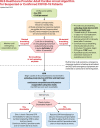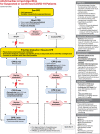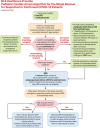Interim Guidance for Basic and Advanced Life Support in Adults, Children, and Neonates With Suspected or Confirmed COVID-19: From the Emergency Cardiovascular Care Committee and Get With The Guidelines-Resuscitation Adult and Pediatric Task Forces of the American Heart Association
- PMID: 32270695
- PMCID: PMC7302067
- DOI: 10.1161/CIRCULATIONAHA.120.047463
Interim Guidance for Basic and Advanced Life Support in Adults, Children, and Neonates With Suspected or Confirmed COVID-19: From the Emergency Cardiovascular Care Committee and Get With The Guidelines-Resuscitation Adult and Pediatric Task Forces of the American Heart Association
Keywords: cardiopulmonary resuscitation.
Figures






Comment in
-
How to ventilate during CPR in time of Covid-19?Resuscitation. 2020 Jun;151:148-149. doi: 10.1016/j.resuscitation.2020.04.036. Epub 2020 May 1. Resuscitation. 2020. PMID: 32371025 Free PMC article. No abstract available.
-
Cardiopulmonary Resuscitation During the Coronavirus Crisis: Important Updates for the Cardiothoracic and Vascular Anesthesia Community.J Cardiothorac Vasc Anesth. 2020 Sep;34(9):2312-2314. doi: 10.1053/j.jvca.2020.04.039. Epub 2020 Apr 28. J Cardiothorac Vasc Anesth. 2020. PMID: 32434725 Free PMC article. No abstract available.
-
Cardiopulmonary resuscitation in COVID-19 patients - To do or not to?J Clin Anesth. 2020 Oct;65:109879. doi: 10.1016/j.jclinane.2020.109879. Epub 2020 May 19. J Clin Anesth. 2020. PMID: 32450476 Free PMC article. No abstract available.
References
-
- Virani SS, Alonso A, Benjamin EJ, Bittencourt MS, Callaway CW, Carson AP, Chamberlain AM, Chang AR, Cheng S, Delling FN, et al. on behalf of the American Heart Association Council on Epidemiology and Prevention Statistics Committee and Stroke Statistics Subcommittee. Heart disease and stroke statistics–2020 update: a report from the American Heart Association. Circulation. 2020;141:e139–e596. doi: 10.1161/CIR.0000000000000757. - PubMed
MeSH terms
Grants and funding
LinkOut - more resources
Full Text Sources
Medical

